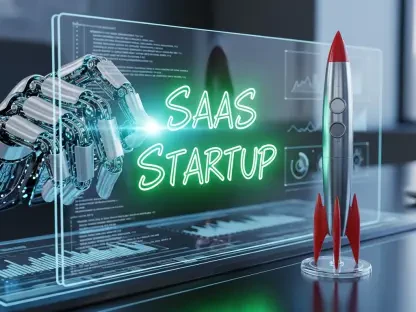In the dynamic landscape of software development, technology leaders are increasingly turning to software-as-a-service (SaaS) tools with the expectation of enhanced efficiency and scalability. This shift is driven by the pressing need to optimize the software development lifecycle (SDLC) and address a myriad of challenges that software developers face. Despite the initial promise of SaaS solutions, a recent survey conducted by Onymos has shed light on significant hurdles that persist across the SDLC. The survey, which included responses from 300 leaders in software development, IT, and security, offered critical insights into the current state of SaaS adoption and its impact on software development. Results revealed that 84% of respondents rely on SaaS tools, and 65% consider software initiatives as pivotal to business success. However, issues such as application performance, along with challenges during development, quality assurance, and maintenance phases, continue to affect software projects significantly.
The lure of SaaS tools often lies in their ability to deliver rapid deployment and ease of use. However, CEO of Onymos, Shiva Nathan, cautions that while these tools initially offer speed and convenience, they come with long-term costs that must be carefully considered. Nathan emphasizes the necessity of aligning SaaS solutions with long-term strategic goals rather than merely focusing on immediate gains. He warns against over-dependence on third-party vendors, which can lead to complications such as increased operational costs, security risks, and compliance issues. Retaining control over data, ensuring data portability, and possessing the ability to export code are essential steps in mitigating these risks and maintaining enterprise agility.
Persistent Challenges in Application Performance and Maintenance
One of the significant revelations from the Onymos survey is the ongoing struggle with application performance, which 25% of respondents identified as a major concern. This underscores the reality that despite leveraging SaaS tools, software development teams continue to face critical performance issues. Furthermore, the survey highlighted that 78% of respondents experienced an uptick in their workloads related to application updates over the past year. These increased workloads are indicative of a broader challenge of maintaining and optimizing applications on a continuous basis. For 52% of technology leaders, daily maintenance tasks consume a significant portion of their time, further emphasizing the need for more streamlined and effective maintenance processes.
The data suggest that while SaaS tools are designed to ease the SDLC, they may inadvertently contribute to the complexity of managing ongoing updates and maintenance. This raises important questions about the overall effectiveness of SaaS solutions in truly eliminating the inherent challenges within software development. The increased workload and time consumed by maintenance activities indicate that teams might be overburdened by the requirements for keeping software applications up-to-date and secure. As a result, what was once perceived as a solution to speed up development and ease operational burdens might be contributing to longer-term inefficiencies and constraints on human resources.
Strategic Shift: Ownership and Control Over SaaS Solutions
Recognizing these challenges, technology leaders are beginning to prioritize ownership and control over their SaaS portfolios as a strategy to ensure security, agility, and scalability. More than ever, it is crucial for organizations to carefully audit their existing SaaS tools and identify redundancies that do not contribute to their strategic goals. By streamlining their portfolios and eliminating unnecessary tools, organizations can reduce the complexity of their maintenance processes and minimize the phenomenon known as SaaS sprawl—where numerous SaaS applications proliferate without adequate oversight.
Furthermore, Nathan advises a more discerning use of low-code and no-code tools, particularly for innovative and complex projects. While these tools have gained popularity for their ability to expedite certain development tasks, they may not be suitable for mission-critical applications that require robust and scalable solutions. The focus should be on leveraging tools that align with the long-term vision of the organization, ensuring they support not just immediate needs, but also future growth and adaptation.
Long-term Strategic Goals Over Immediate Convenience
In today’s fast-paced software development world, technology leaders are increasingly adopting software-as-a-service (SaaS) tools, drawn by promises of improved efficiency and scalability. This movement aims to optimize the software development lifecycle (SDLC) and tackle the various challenges developers encounter. However, even with these promises, a recent Onymos survey illuminates the persistent hurdles throughout the SDLC. The survey, which gathered input from 300 leaders in software development, IT, and security, provides valuable insights into the current trends in SaaS adoption and its impact.
Findings show that 84% of respondents depend on SaaS tools, and 65% view software initiatives as crucial to business success. Yet, issues such as application performance and challenges in development, quality assurance, and maintenance phases significantly affect software projects. While SaaS tools promise quick deployment and user-friendliness, Onymos CEO Shiva Nathan warns of hidden long-term costs. He stresses the importance of integrating SaaS solutions with long-term strategic goals, not just immediate benefits. Avoiding over-reliance on third-party vendors can help avoid rising operational costs, security risks, and compliance challenges. Ensuring control over data, keeping data portable, and maintaining the ability to export code are essential for managing these risks and sustaining enterprise agility.









